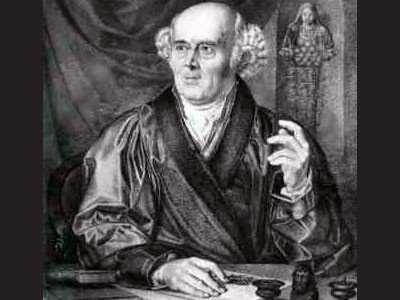Understanding Homeoprophylaxis
Volume 1 :: Issue 2 - June 2020

Editorial
Homeoprophylaxis: The need of Time in View of The Present Covid-19 Pandemic
Jun 06, 2020 by Dr. Punit Srivastava,
To stay healthy has become a constant struggle ...a far-fetched dream for all of us. The present pandemic of Covid-19 has made us realize the compromised health condition and low immunity we possess. As a homeopath we know that if the inner terrain is weak we are bound to be more sick and diseased.
Interview
Dr. Isaac Golden, Interviewed by Dr. Punit Srivastava
Jun 06, 2020 by Dr. Punit Srivastava,
Homeopathizon Horizon presents to you the Interview of Dr. Isaac Golden, the living legend who is considered a world authority on Homeoprophylaxis interviewed by Dr. Punit Srivastava, Chief Editor, Homeopathic Horizon. Here he explains about What Homeoprophylaxis is, its methods and how it is different from Vaccination.
Video lecture
Video Lecture on Homeopathy Prophylaxis by Professor George Vithoulkas
Jun 06, 2020 by Professor George Vithoulkas,
This video is the lecture on homeoprophylaxis given by Professor Vithoulkas at the International Academy of Classical Homeopathy, Alonissos.
Featured articles
Homeopathic Prophylaxis – The Nontoxic Immunisation Option
Jun 06, 2020 by Cathy May Lemmon,
This article shares some of the background of Homeoprophylaxis ("HP"), records of its effectiveness, and means whereby it can be used in clinical practice. It explores the immunization option available through homeopathy. The inherently safe medicine of homeopathy has had an immunisation option available and in use for more than 200 years
Homeoprophylaxis: Human Records, Studies and Trials
Jun 06, 2020 by Dr. Fran Sheffield,
Homeopathic medicines have been used for prevention as well as treatment of epidemics since long. The paper enumerates the list of clinical studies and trials both historical and current which were done to control various infectious diseases. This shows how Homeoprophylaxis has been effectively used since the times of Hahnemann to control outbreaks and epidemics.
Homeopathic Vaccination & Prophylaxis – The Time Has Come for Controlled Studies
Jun 06, 2020 by Thomas Kruzel,
This paper enlists research papers discussing action of homeopathic medicines. It also explains how homeopathic medicines increase our immunity helping us in fighting diseases. It further discusses various clinical trials and researches which prove the effectiveness of Homeoprophylaxis.
Homeoprophylaxis: The Great Misunderstanding
Jun 06, 2020 by Professor George Vithoulkas,
This article is a transcript of a lecture on homeoprophylaxis given by Professor Vithoulkas at the International Academy of Classical Homeopathy, Alonissos. Here he explains that Homeoprophylaxis is against Homeopathy principles and it is just a misinterpretation of Hahnemann's teachings.
Epidemics and Homeoprophylaxis
Jun 06, 2020 by Dr. Renu Bala,
This paper addresses the Role of Homeoprophylaxis in Epidemics. It also enlists the scientific trials confirming the effectiveness in HP with special reference to the contributions made by Central Council of Research in Homeopathy to the field.
Large Homœoprophylaxis: Interventions by Government Institutions
Jun 06, 2020 by Isaac Golden,
This paper discusses benefits from the widespread use of appropriate Homeoprophylaxis interventions, including saving lives and preventing suffering scientists. HP is potentially valuable, especially in situations where vaccination is not possible either due to there being no vaccine for the disease
Guidelines for Epidemic Management In Homoeopathy
Jun 06, 2020 by Dr. Anand P R,
This paper discusses the significance of using Homeopathy in Epidemics and the Guidelines for conducting a clinical trial to prove the effectiveness of homeopathy/Genus epidemicus in Epidemic outbreak. It also presents a Strategic approach for epidemic management including formation of the Epidemic control group in Homoeopathy.
Research papers
A Re-evaluation of the Effectiveness of Homoeoprophylaxis Against Leptospirosis in Cuba in 2007 and 2008
Jun 06, 2020 by Isaac Golden,
This research paper discusses the effectiveness of homoeoprophylaxis against Leptospirosis, a zoonotic disease (transmitted between humans and animals) caused by infection with pathogenic strains of Gram-negative bacterium Leptospira spp in Cuba. Homeoprophylaxis treatment included a prime administration of 2 doses of nosoLEP 200C
Arsenic Album as Genus Epidemicus of Typhoid Fever - A Study
Jun 06, 2020 by Dr. Aparna Balantrapu,
Typhoid fever is the result of systemic infection mainly by Salmonella typhi and S. Paratyphi A or B. The disease may occur sporadically, epidemically, or endemically. Arsenic alb (Genus epidemicus) had shown its curative as well as the preventive action. The findings are encouraging to open avenues for further studies on using genus epidemicus for treatment and prevention of epidemic diseases.
Historical papers
Cause and Prevention of the Asiatic Cholera
Jun 06, 2020 by Dr. Samuel Hahnemann,
In this Historical Paper of Dr. Samuel Hahnemann, he discusses about the Asiatic Cholera epidemic, its signs and symptoms and the role of Camphora in it. It is reproduced here from The Lesser Writings by R.E. Dudgeon for the readers to understand the concept of Homeoprophylaxis.
Email - mail@homeorizon.com





















